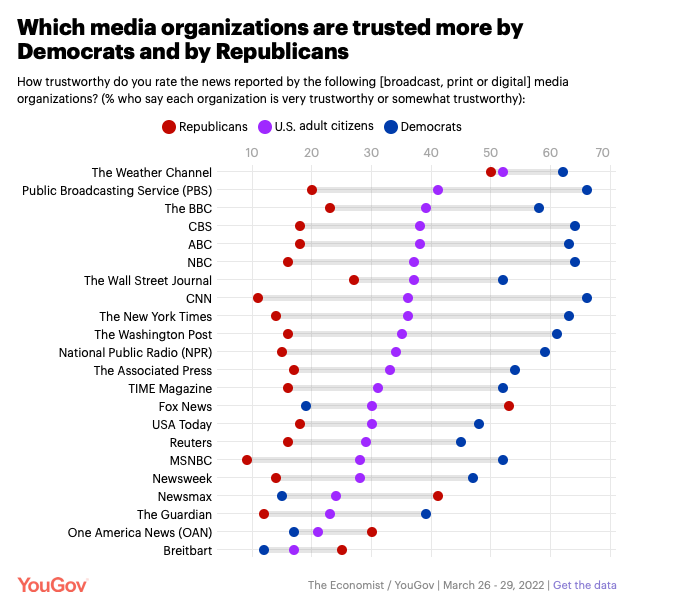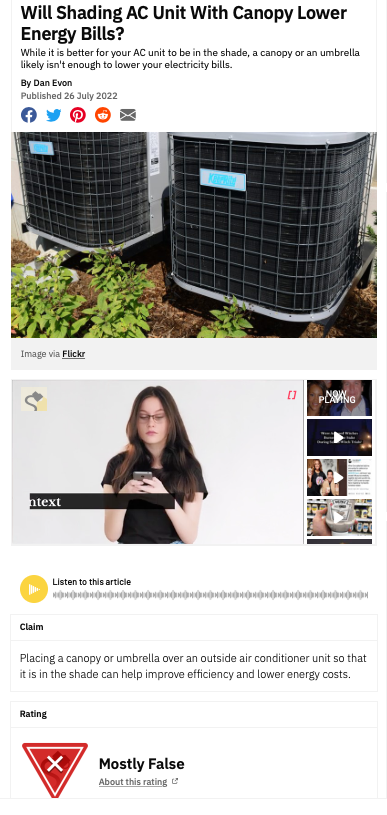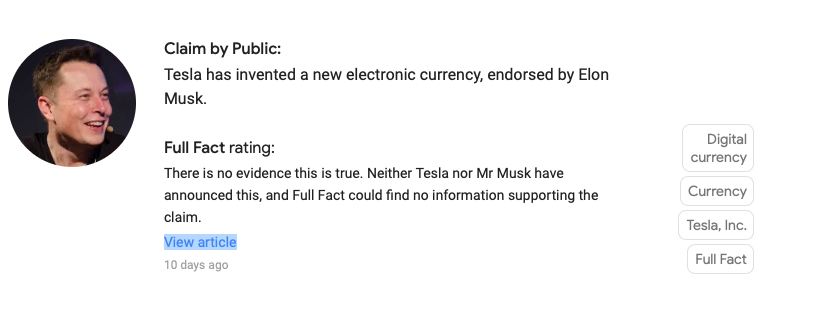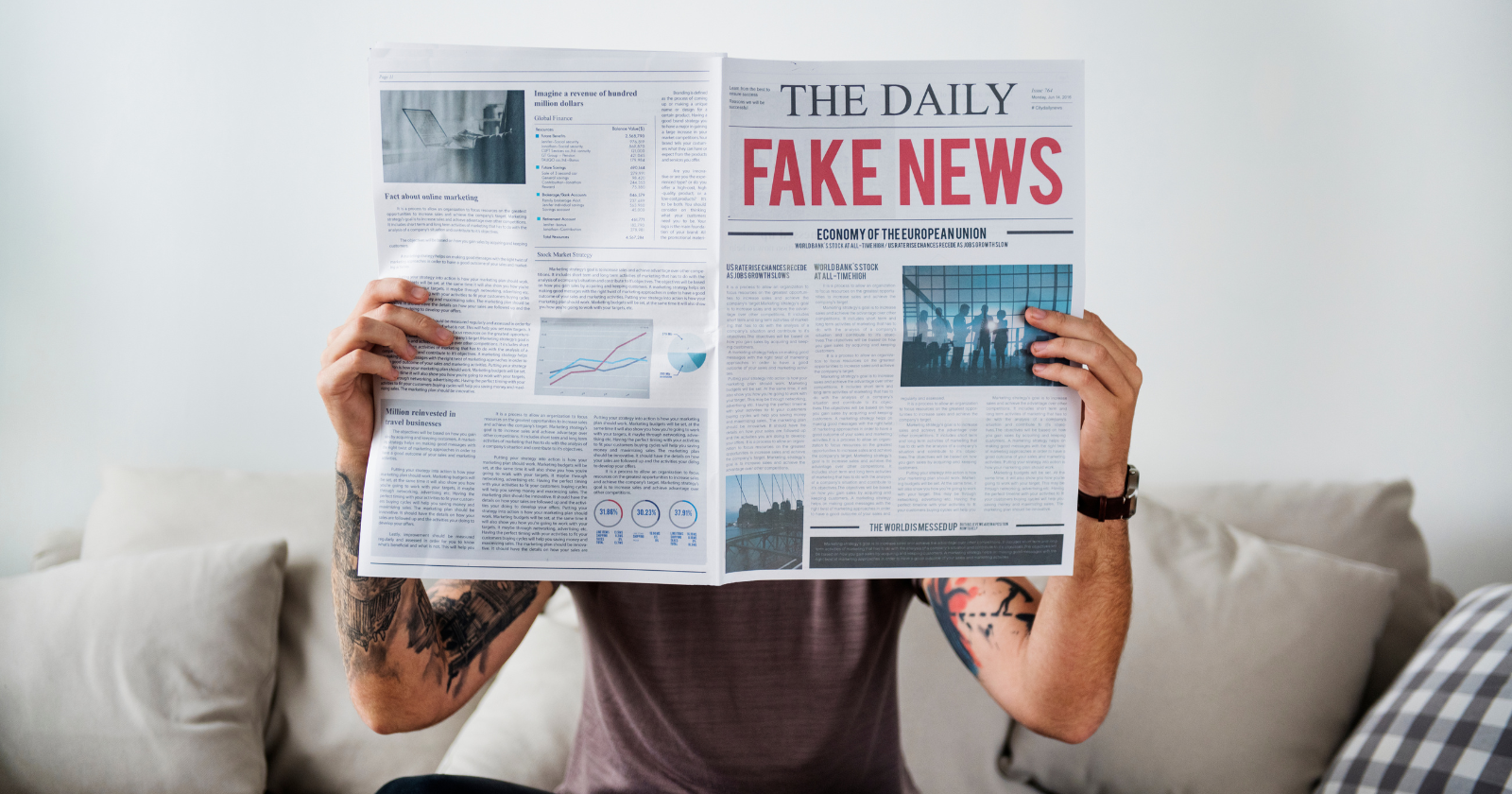Thanks to modern technology, we live in an era of unprecedented connectivity, real-time updates, and incredible amounts of data at our fingertips.
The irony is that despite access to reliable information, disinformation runs rampant.
And it’s not just flat-earthers, moon landing hoax believers, and tinfoil JFK conspiracy theorists.
There is a lot of seemingly credible information out there that, upon further inspection, turns out to be inaccurate, out of context, or flat-out false information.
The amount of fake news has grown at an incredible rate.
And as the purveyors of these fabrications and half-truths have grown increasingly media-savvy, it’s becoming harder to determine what’s real and what’s “fake news.”
This is a significant problem. Globally, 76% of people acknowledged worries about weaponizing false information or fake news – an all-time high.
Social media platforms have contributed to this, often serving as echo chambers in which these stories get much more exposure than they would ever have received in the pre-internet world.
And this, in turn, offers them a false sense of credibility.
While even the most intelligent people can be mistaken occasionally, maintaining a healthy degree of skepticism and evaluating the source of information can combat your vulnerability to misinformation.
What Is Fake News?
In its research guide, the University of Michigan Library describes fake news as “those news stories that are false: the story itself is fabricated, with no verifiable facts, sources or quotes.
Sometimes these stories may be propaganda designed to mislead the reader or positioned as ‘clickbait‘ written for economic incentives (the writer profits on the number of people who click on the story).”
This separates fake news from misinformation, which is inaccurate information created or shared by mistake without the intention to deceive.
An example is the famous “Dewey Defeats Truman” headline from the Chicago Tribune.
Based on indications that Thomas E. Dewey would win the 1948 presidential election by a landslide, the newspaper’s publishers legitimately thought Truman had lost. Of course, we all know how that turned out.
On the other side is fake news or disinformation, which is intentionally false or misleading.
First Draft News, a nonprofit coalition created to fight false information online, identifies seven different types of mis- and dis-information:
- Satire or parody – no harm is intended, but it has the potential to fool.
- False connection – headlines, visuals, or captions that do not support the content and thus mislead the reader.
- Misleading content – content is purposefully framed to portray a person or issue in a particular light.
- False context – stories are presented with false or missing contextual information.
- Imposter content – uses fabricated quotes or information from genuine sources.
- Manipulated content – manipulated information or images meant to deceive.
- Fabricated content – 100% false content intended to deceive and do harm.
These stories are increasingly dangerous in the digital age. Many people consume stories on social media without fact-checking or confirming that such headlines exist for a “shock” factor.
Once these stories are shared and popularized, people begin to believe them and accept them as the truth.
Often, this can happen subconsciously. This is a particularly vicious cycle on social media, where stories that make it to the top of the news feed are all too often untruthful clickbait.
Jokes And Satire Are Not Fake News
It’s important to mention that satire sites like The Onion and Clickhole, which feature funny stories based on relevant current events, are not “fake news.”
They are intelligent satire pieces intended to be humorous – not real – and their entire sites are based around their readers being knowledgeable about this strategy and theme.
With branding like Clickhole’s own “Because Everything Deserves to Go Viral” or The Onion’s “America’s Finest News Source,” their articles’ joking nature is intended to be common knowledge.
A Word On Mainstream News
According to the 2022 Trust Barometer, an annual survey of global trust and credibility by Edelman Data & Intelligence, 50% of people distrust the media, and 46% view it as a divisive force in society.
A 2021 Gallup poll found Americans’ trust is even lower than the international average, with only 36% expressing a fair amount of confidence in mainstream media.
This varies by political affiliation, with 68% of Democrats trusting major news sources, as compared to 31% of independents and just 11% of Republicans.
However, most mainstream news sources have to undergo editorial reviews. Readers recognize them as being prestigious forms of journalism.
The Weather Channel, PBS, the BBC, CBS, ABC, NBC, and the Wall Street Journal were among the most trusted across ideological groups.
However, of these, only the Weather Channel was viewed favorably by conservatives, who trust Fox News and Newsmax as reliable sources of information.
 Screenshot from today.yougov.com, August 2022
Screenshot from today.yougov.com, August 2022How To Differentiate Between Fake News And Real News
While it’s not easy, there are some things you can do to help determine whether a story is real or fake.
Here are some tips to help you differentiate between fake news and real news stories:
What Is The Site?
As discussed above, while people fall all over the board ideologically in deciding whether they trust a mainstream news source, the truth is that most major recognized sources for news journalism are not going to produce clickbait fake news.
Most of the fake news sources that go for “shock” value and produce fake stories are not as recognized. Look into the source itself and see whether it is a website that you can trust.
Check The Domain
Many fake news stories use URLs and domain names similar to reputable news sources to mimic them.
One of the best ways to determine whether a site is legitimate is to examine the ending of the URL, as these fake sites will often use something like “.com.co,” as opposed to the “.com” of the actual site.
Just like you should never enter personal information into your bank’s website without first verifying it’s not a phishing site, you should double-check the URL of the news sites in social media posts.
What Are The Authors’ Sources?
Good news stories contain links to other reputable reporting by respected organizations.
They contain interviews with individuals who can confirm or deny they made a claim. They are supported by evidence, dates, and other data that can be fact-checked.
Be wary of sources that cannot substantiate their claims.
Sometimes a source may sound reputable in a piece, only for you to later find out no such person exists.
For example, the satire site Snickersee published an article about the return of bottlenose dolphins to Lake Michigan.
If you were not familiar with the site, at first glance seemed legitimate, even going so far as to quote a scientist with the Great Lakes Fish and Water Quality Society.
However, no such scientist or organization exists, and dolphins have never lived in the Great Lakes.
Fact Check!
When in doubt, fact-check the information that you read. You can start with a simple search using the keywords or the event that is being reported.
You can also use sites like PolitiFact, FactCheck, and Snopes – which are incredibly reputable fact-checking sites for various issues and topics (not just politics).
 Screenshot from snopes.com, August 2022
Screenshot from snopes.com, August 2022Examine The Website Closely
It is essential not to look at one story alone but the full spectrum of details on the site.
Is there another fake-looking or shocking headline? What does the overall website look like? How is the user experience?
Sometimes doing a little further digging will make it evident if a news story is fake.
However, this can be tricky as many fake news sites intentionally mislead visitors. They may look like the real deal, all the way down to the logo in the masthead.
Just remember sites like BBC.com or NYTimes.com have teams of web professionals on staff, including UX and UI specialists.
A reputable site is unlikely to be slow-loading, clunky, and cumbersome to use.
Likewise, glaring spelling or grammar mistakes, while not impossible, do not usually make it through the proofing and editing process.
Check Wikipedia
This may be surprising, but Wikipedia is an excellent source for identifying fake news sites.
It maintains an ever-growing list of fake news sites. This list includes sites like American News, which have created disinformation shared via social media, as well as satire sites and those used to spread malware.
Fact Check With Google
To combat false information and aid fact-checkers, journalists, and researchers in their work, Google added Fact Check Tools to its toolbox in 2022.
This collection of more than 150,000 fact checks allows users to access information from “reputable publishers” around the world to ensure integrity.
To use this tool, enter a topic or person into the search bar.
Google will then pull information from its network of trusted publishers to give you at-a-glance fact-checking.
For example, despite rumors that Tesla CEO Elon Musk has invented a new digital currency, Google Fact Check is easily able to squash this.
 Screenshot from Google Fact Check tool, August 2022
Screenshot from Google Fact Check tool, August 2022Put Technology To Work
There are several digital tools you can employ to combat fake news.
A list compiled by the RAND Corporation, an American global policy think tank, includes several digital tools for fighting online disinformation.
These include everything from browser extensions like BotSlayer, which helps track and detect information manipulated on Twitter, to verification and bias checking tools like NewsCheck Trust Index, to collections of resources that promote media literacy skills like NewseumED.
Read Past The Headline
In a world of minute attention spans and increasing competition for viewers’ eyes, clickbait is everywhere.
These sensationalized headlines attempt to draw as many clicks as possible by appealing to emotion and curiosity. They often take pieces of quotes out of context or are intentionally vague in a way that infers something scandalous.
This practice is particularly problematic on social media platforms, where studies have shown up to 59% of people will share articles without reading past the headline.
In response, both Facebook and Twitter have implemented features that push users to read articles before sharing them in their feeds.
Be Aware Of Your Own Biases
Everyone likes to feel smart. And everyone wants to have their opinions confirmed. That’s why some people will doggedly stick to their version of reality even in the face of overwhelming evidence that they’re wrong.
While you may not be that stubborn, everyone has implicit biases. And that’s why it’s imperative not to let what you want to believe override the facts.
Confirmation bias occurs when you put more stock into something that confirms what you already believe while minimizing information it doesn’t. Conservative-minded people trust right-leaning news sources, and liberals rely on liberal-minded platforms.
Help Combat The Spread Of False News
As long as there has been news, there have been bogus stories.
But whereas a malicious actor spreading false information about Alexander the Great during the Siege of Tyre would only be able to influence a few thousand people, social media has created an environment in which anyone can spread disinformation globally, potentially to millions of people.
According to Avaaz’s global activism nonprofit study, the top 100 most popular false or misleading stories about the 2020 U.S. presidential election had 162 million views.
By contrast, there are only 168 million registered voters in the country.
The same Avaaz report stated that an October 2020 poll found roughly 91 million registered voters saw misinformation about mail-in voter fraud on Facebook. And 35% of registered voters believed this.
Fake news is a significant problem in the cyber age. And at the end of the day, it doesn’t boil down to beliefs or opinions. Facts don’t change, no matter what your views are. Water is still wet, and ice cream is still cold, even if it that inconvenient for some people.
And while social media platforms are attempting to uncover solutions to this issue, much of the burden will ultimately fall on you, the user.
But this makes it essential that each person does their part to combat the spread of fake news.
You should approach every news article, video, or social media post skeptically. Even if the originator is a reliable source of information, at the end of the day, they’re only human.
And that means, just like everyone else, they can fall victim to incorrect information, inaccurate statistics, or quotes taken out of context.
Do not share fake news on your social channels. Even if you’re only sharing it for its sheer outlandishness, you’re increasing its visibility, so don’t make this mistake.
If your friends or family members are sharing disinformation, message them and let them know. And be sure to mention how you identified it as fake.
And if you come across a fake news article with a comments section, make sure you leave a message detailing why it’s wrong and how you arrived at that conclusion.
Hopefully, this will help others identify it as false news and avoid sharing it further.
Everyone has to do their part, but if we all do our part, we can at least stem the tide of this unfortunate phenomenon.
More Resources:
- Tips For Avoiding Misinformation In SEO Resources & Conversations
- Google On Penalizing Misinformation
- SEO For Beginners: An Introduction To SEO Basics
Featured Image: Rawpixel.com/Shutterstock





